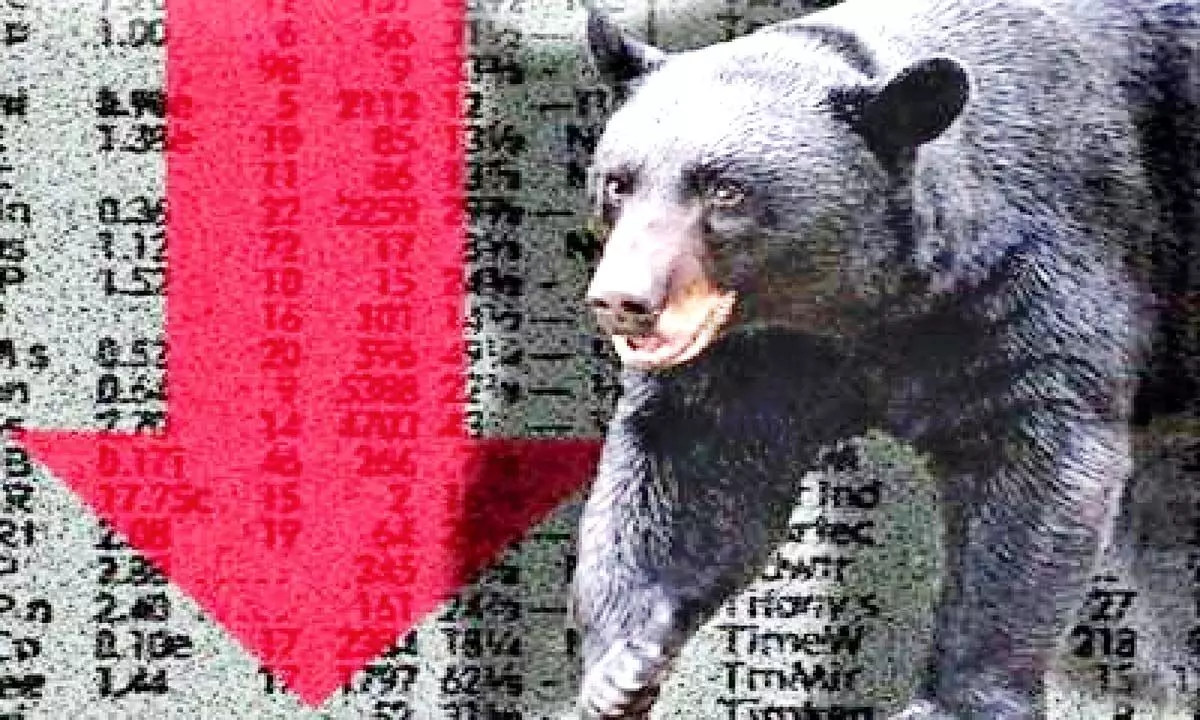S&P 500 enters bear phase for 1st time since 2020
Slumps 3.9% as 495 of its 500 components ended the day lower with investor unloaded risk
image for illustrative purpose

New York: The US stock-market selloff deepened, with the S&P-500 entering a bear market, as investors took another look at the June 10 red-hot inflation data and liked it even less.
Faced with rising chances of aggressive monetary tightening by the Federal Reserve, investors broadly unloaded risk, The Wall Street Journal reported. The S&P 500 slumped 3.9 per cent as 495 of its 500 components ended the day lower. The declines left the US stock benchmark down more than 20 per cent from its January record, sending it into a bear market for the first time since 2020.
Meanwhile, a rout in crypto currencies highlighted investors' increasing unwillingness to hang on to their most speculative holdings. The price of bitcoin plunged below $23,000 before paring that loss to trade down 66 per cent from its November high. The drop in cryptocurrencies accelerated Monday after interest-rate fears sparked a weekend selloff. Bitcoin, the biggest cryptocurrency, traded at 5 p.m. at $23,250.72, a drop of 15 per cent from 24 hours earlier. Ethereum was down 16 per cent from 24 hours earlier to about $1,243. Shares of Coinbase Global fell 11 per cent, while Celsius Network said it was pausing all withdrawals, swaps between cryptocurrencies and transfers between accounts, citing "extreme market conditions", The Wall Street Journal reported.
Even rare bets that have worked in 2022 stumbled on Monday. The energy segment, the only one of the S&P 500's 11 sectors in positive territory this year, fell 5.1 per cent, a steeper decline than that of the broad index. The utilities group, the second-best performer in 2022, also lagged behind the market with a daily drop of 4.6 per cent. "We're definitely seeing a risk-off atmosphere, a flight to quality," said Charlie Ripley, senior investment strategist at Allianz Investment Management. "In that environment, people need to raise cash," he was quoted as saying by The Wall Street Journal.
On average, bear markets have taken 13 months to go from peak to trough and 27 months to get back to breakeven since World War II. The S&P 500 index has fallen an average of 33 per cent during bear markets in that time. The biggest decline since 1945 occurred in the 2007-2009 bear market when the S&P 500 fell 57 per cent. History shows that the faster an index enters into a bear market, the shallower they tend to be. Historically, stocks have taken 251 days (8.3 months) to fall into a bear market. When the S&P 500 has fallen 20 per cent at a faster clip, the index has averaged a loss of 28 per cent. The longest bear market lasted 61 months and ended in March 1942. It cut the index by 60 per cent.
Generally, investors look for a 20 per cent gain from a low point as well as sustained gains over at least a six-month period. It took less than three weeks for stocks to rise 20 per cent from their low in March 2020.
The S&P 500 fell 151.23 points, or 3.9 per cent, to 3,749.63. The Dow Jones Industrial Average dropped 876.05 points, or 2.8 per cent, to 30516.74. The tech-heavy Nasdaq Composite declined 530.80 points, or 4.7 per cent, to 10809.23, off 33 per cent from its November record.

